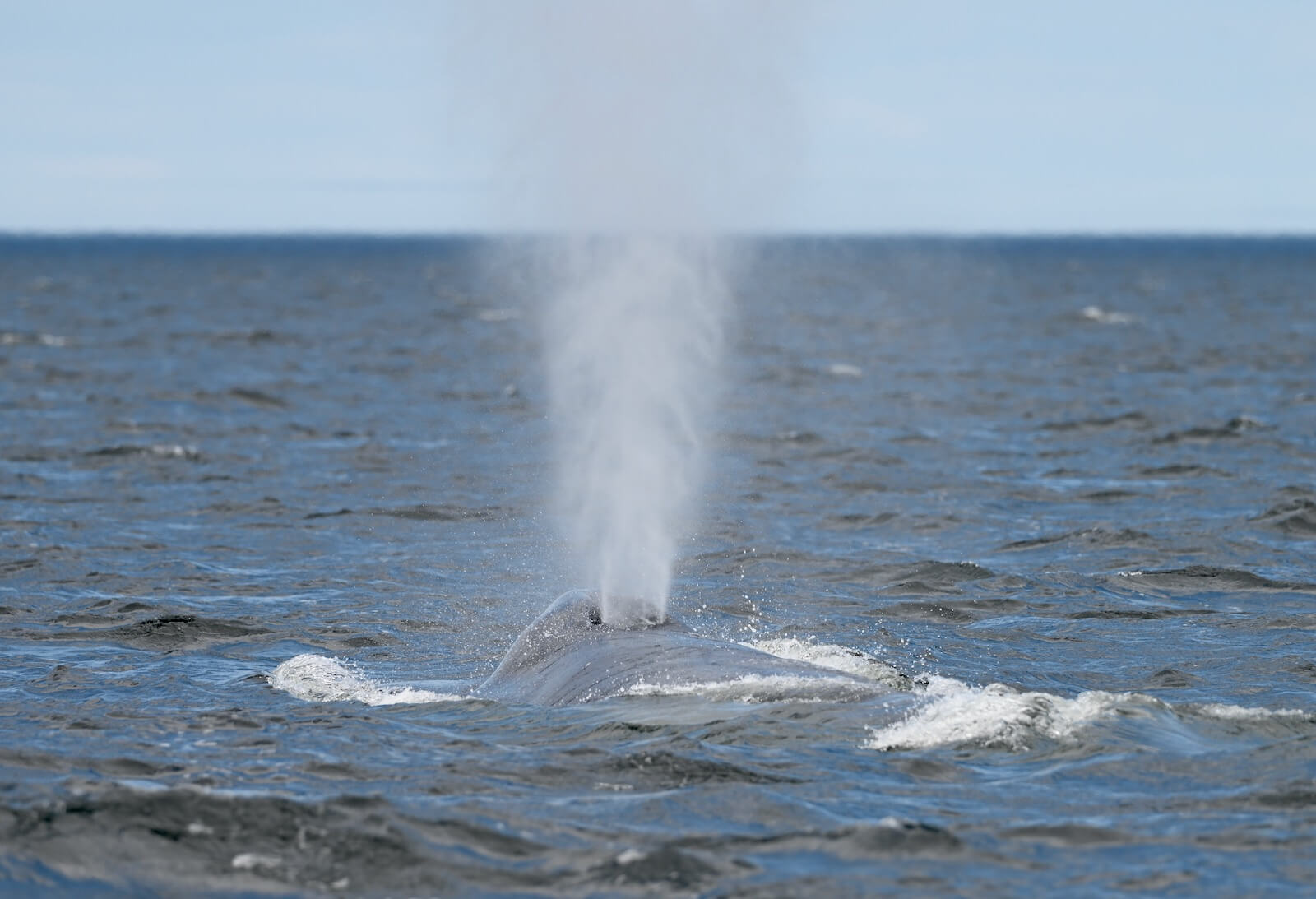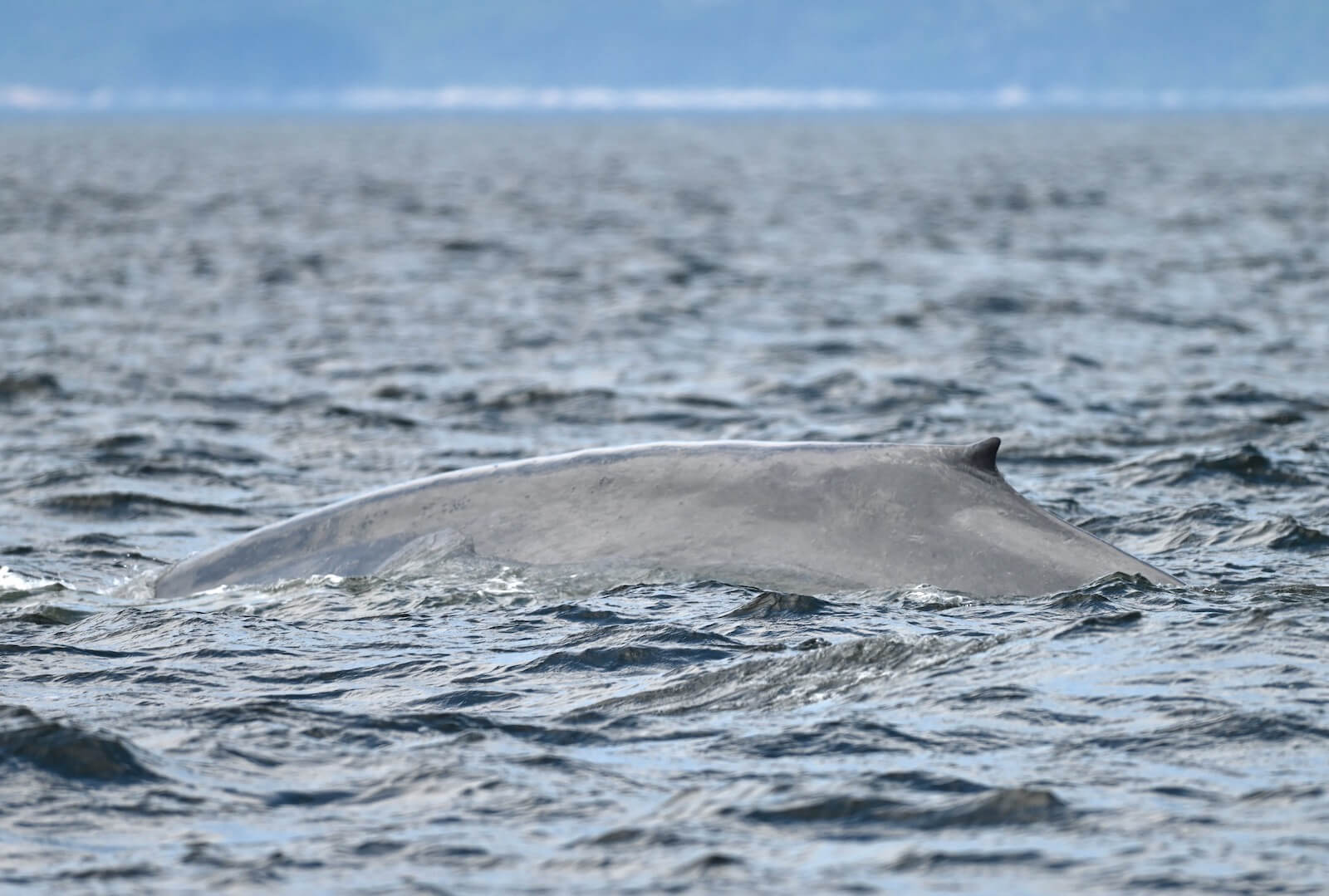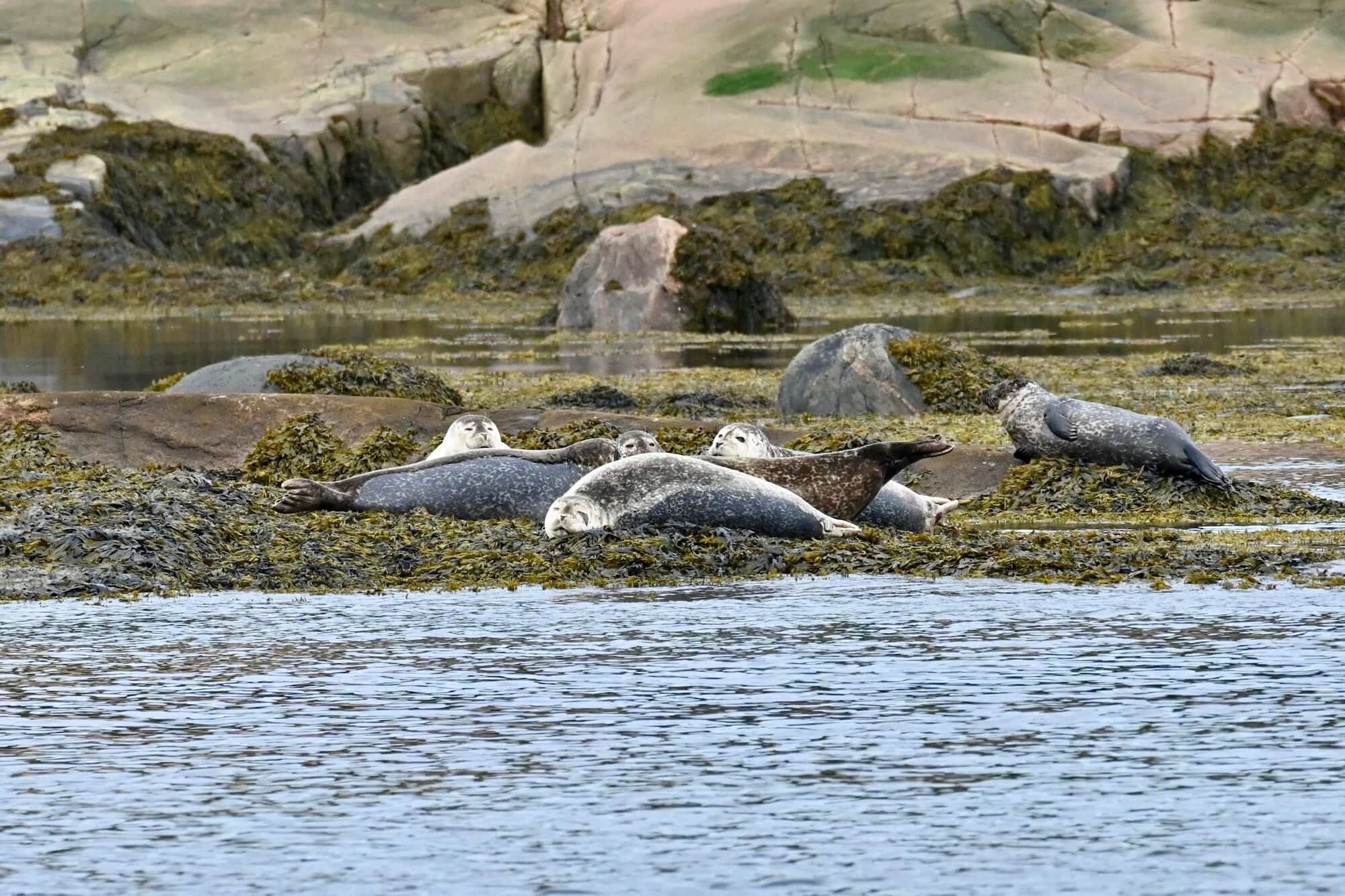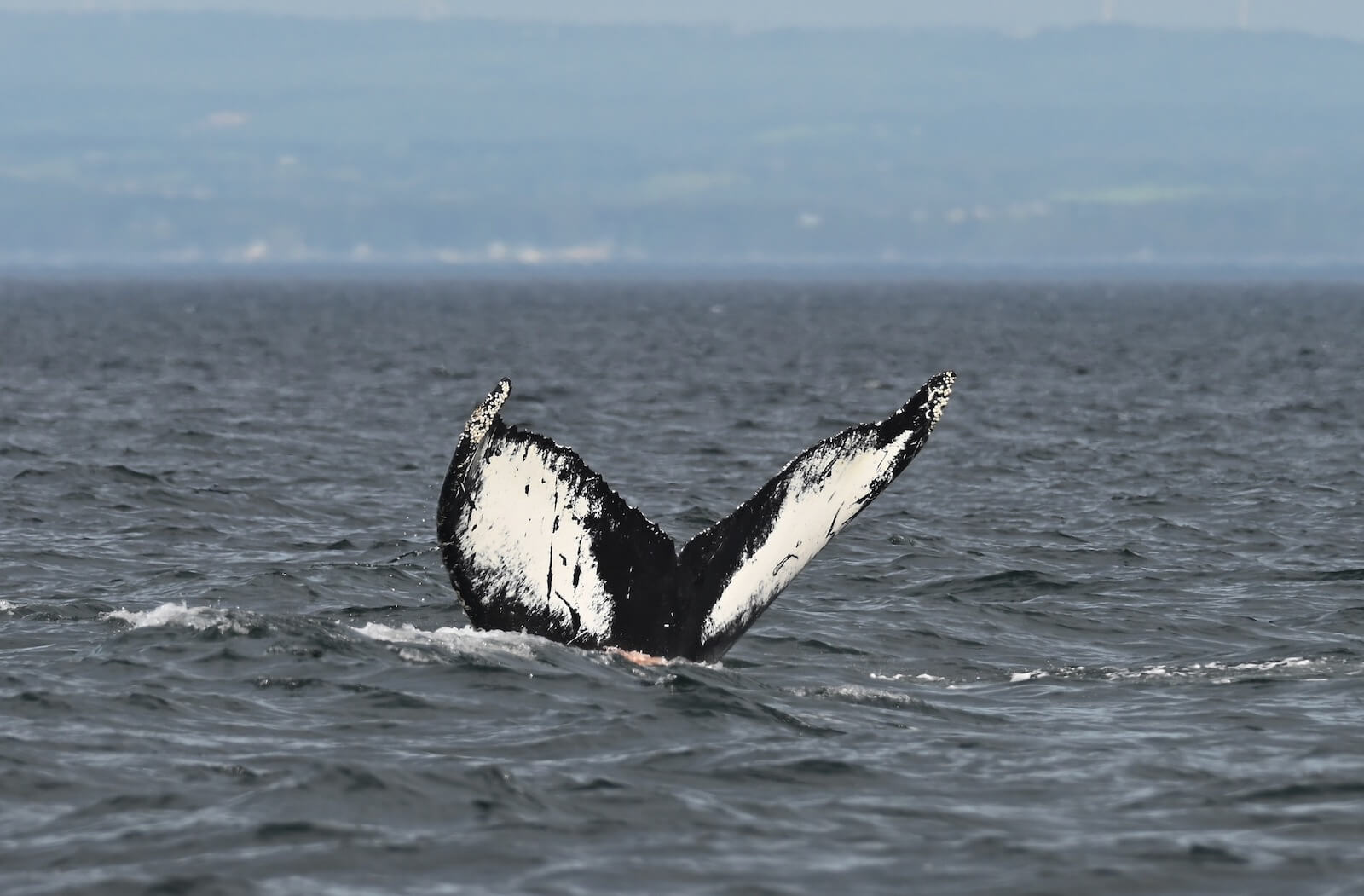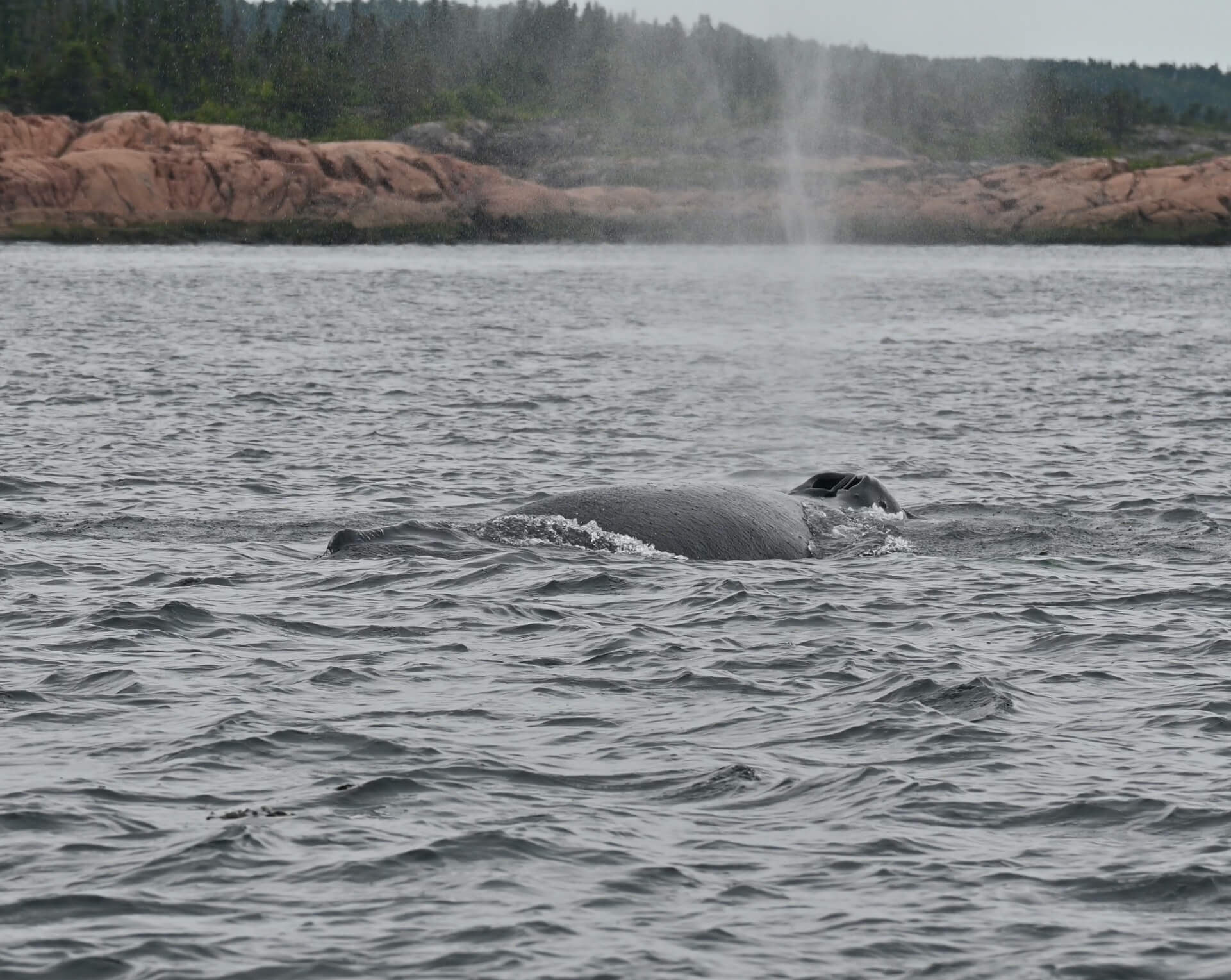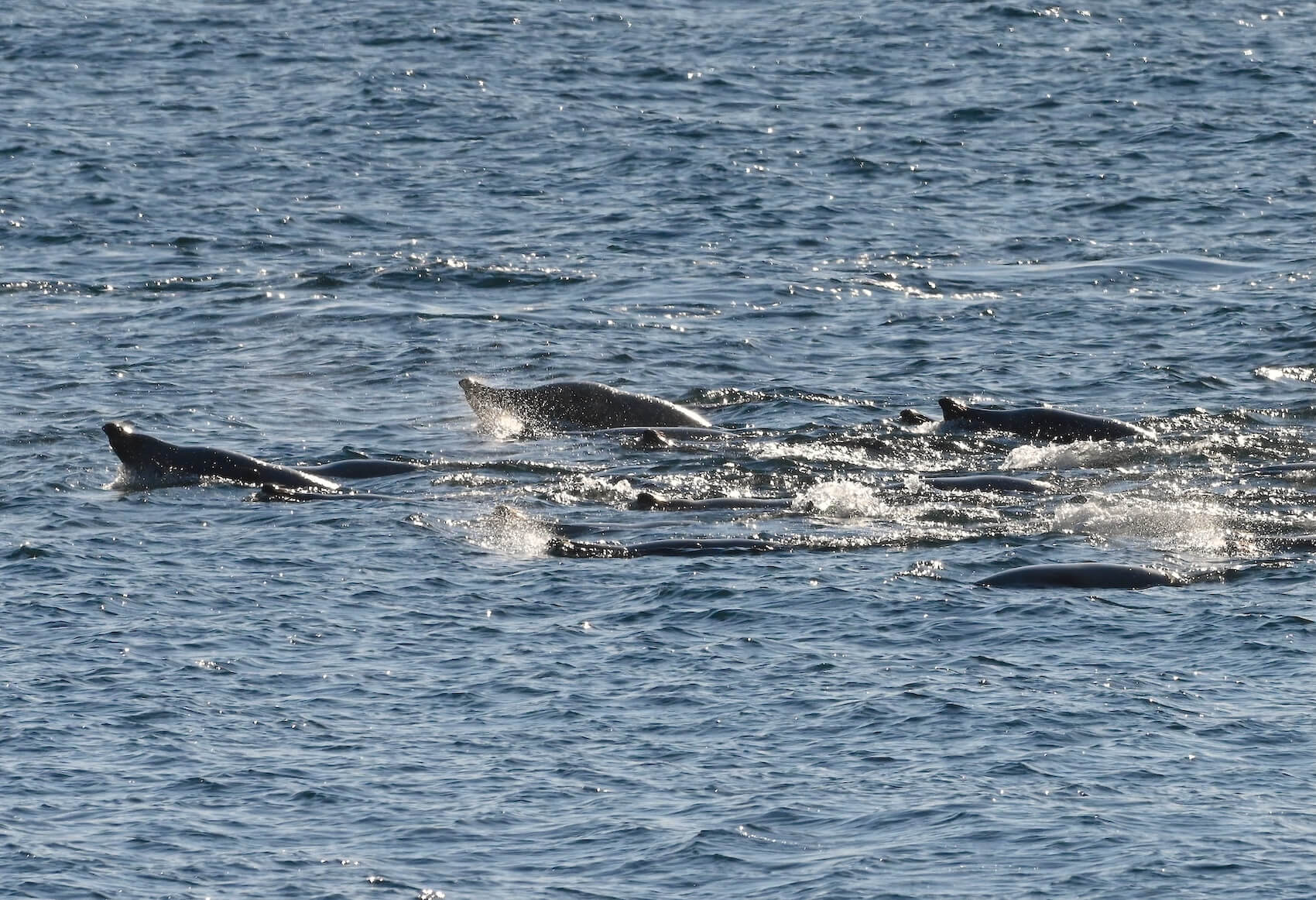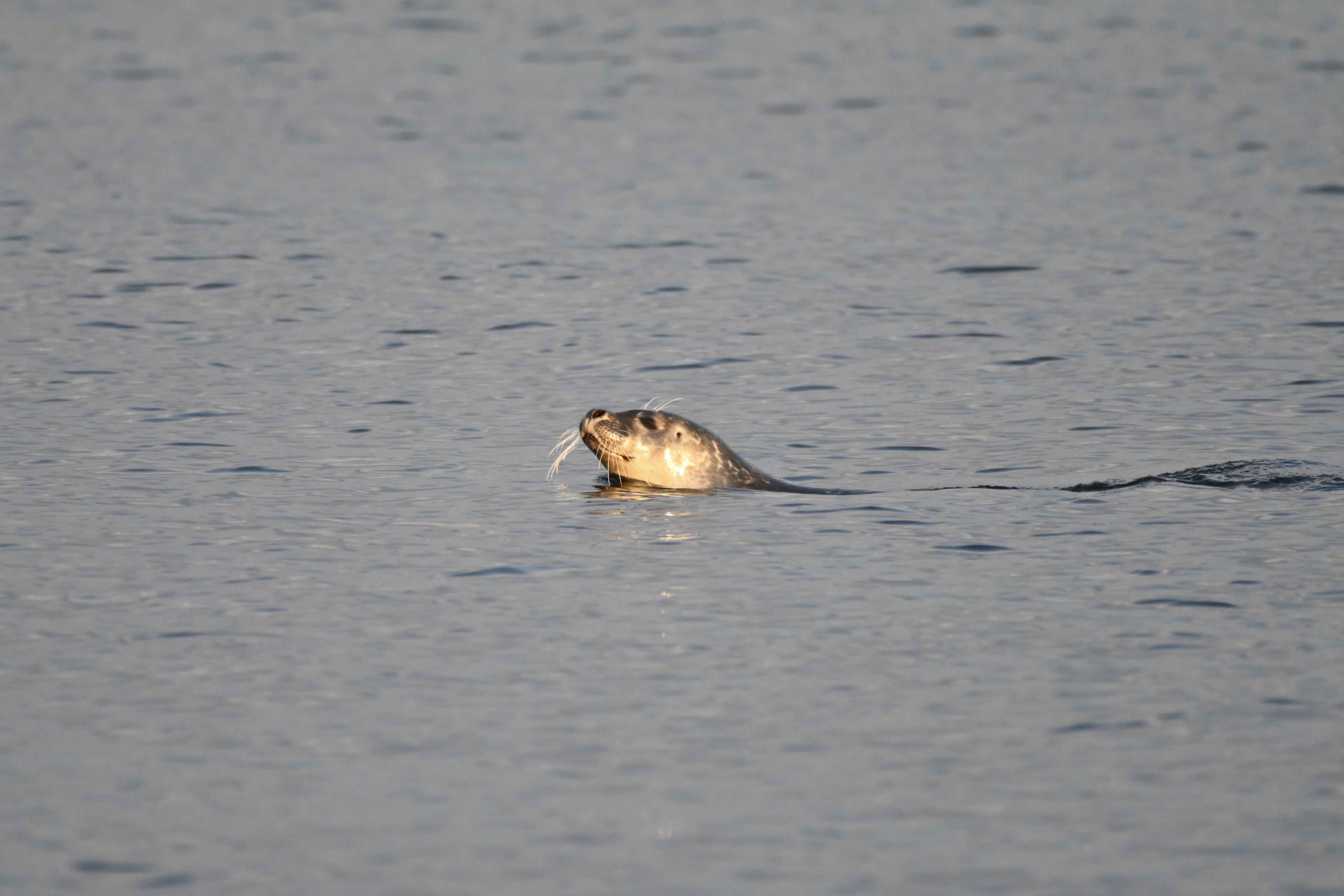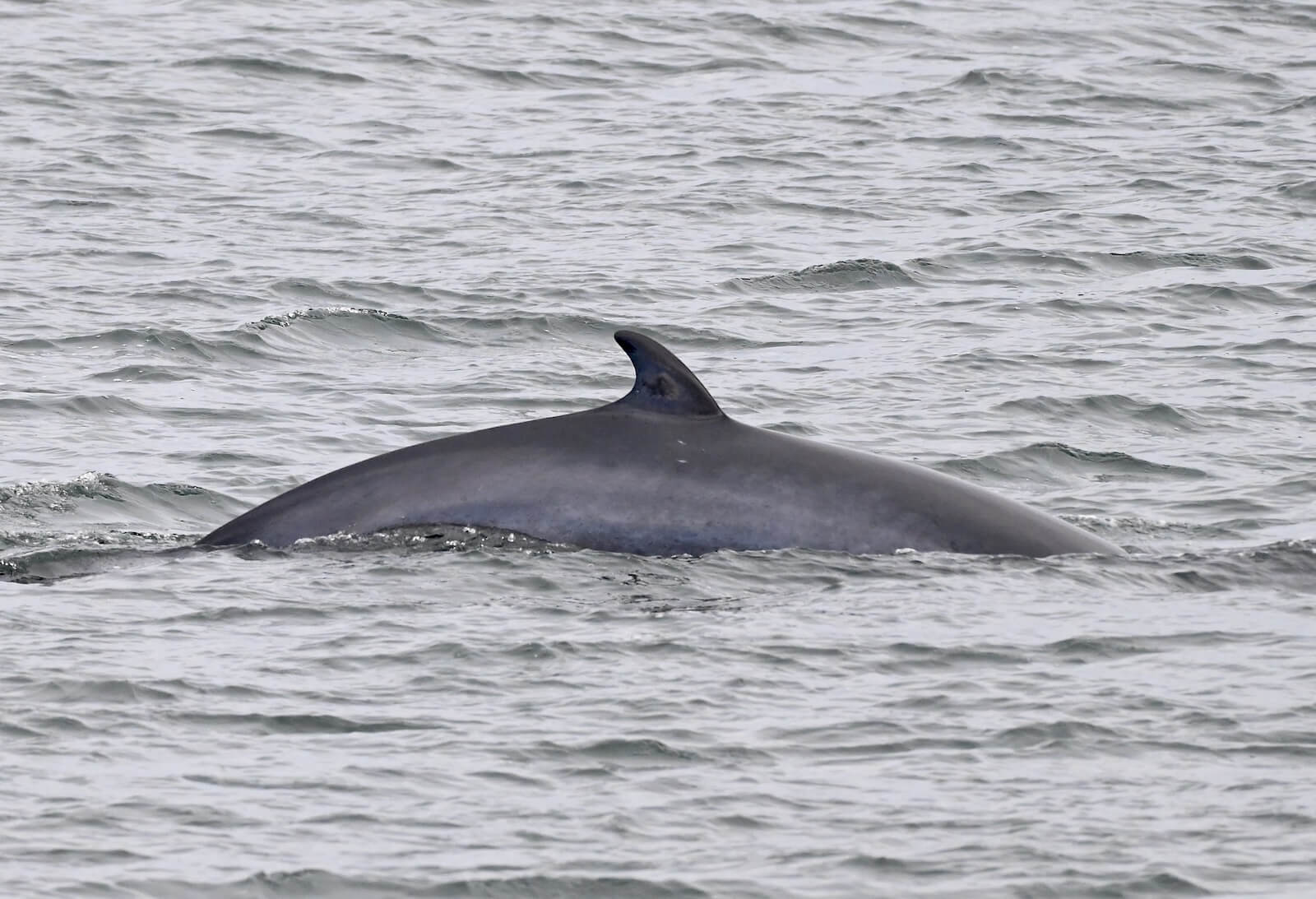This week, the St. Lawrence offered some amazing moments to those who took the time to stop and admire it. From a blowing blue whale near the coast and playful belugas to swift fin whales and minke whales on the hunt. Here is the story of these remarkable observations, from the Charlevoix coast to the Gaspé Peninsula.
Giant of the St. Lawrence
Last Saturday, a group of young naturalists was sipping coffee when they got wind of a blue whale near the ferry dock in Les Escoumins. “We got there as soon as we could, and it wasn’t more than a few minutes before we spotted the first blow,” says one of them. “And then another one! We saw its enormous bluish-grey back several times when the individual surfaced to breath about 100 metres from shore.” Between dives, a few dozen belugas and porpoises rounded out this already unforgettable panorama.
Farther east, a resident was also lucky enough to observe a blue whale on Saturday afternoon. Despite the waves, the animal passed relatively close to shore. Blue whale sightings are always impressive: At 24 to 30 metres long, this animal holds the title for the largest living creature on Earth.
Impressive physiology
When diving, the blue whale can slow its heart rate to two beats per minute to conserve oxygen in its lungs. It can then remain underwater for approximately 10 to 20 minutes, though it can sometimes hold its breath for over 30 minutes. With each ascent to the surface, its spout forms a vertical column that can reach nine metres high.
With its gigantic mouth and baleen plates measuring up to a metre long, it filters massive volumes of water to capture tiny prey, mainly krill. Scientists recently calculated that with each gulp, a blue whale takes in an average of 80,000 litres water!
Fin whales in the spotlight
Fin whales, the second largest species in the world after the blue whale, also made a strong showing this week. Between Tadoussac and Les Bergeronnes, at least six individuals were recorded on July 21, including Bp955, a.k.a. Ti-Croche, Bp910, Bp918, a.k.a. Kashkan, and Bp959. Two new individuals also appeared to be present. These giants were actively feeding on krill, as evidenced by the red trails left on the surface by their excrement. This is a valuable clue to what the animals have been eating of late. In Baie-Comeau, fin whales were the stars this past week. One resident mentions the presence of “minke whales, porpoises, and seals, not to mention two fin whales off the coast of Baie-Comeau.”
Minke whales on the prowl and curious seals
Near the Marine Mammal Interpretation Centre (MIMC) in Tadoussac, two minke whales were feeding on the surface, much to the delight of the visitors passing through. “Two minke whales surface feeding,” explains a writer for Whales Online, “We could see their sharply pointed rostrum sticking out like a cork, and the children standing on the rocks shouting ‘there, there!’ as soon as they came out to ‘help’ us see them.” Farther west, in Port-Cartier, five seals were resting on the rocks of a “hidden bay.”
Belugas play and sing
Belugas made a number of observers laugh and smile. In Saint-Irénée, nearly a dozen or so were spotted this week by a local resident at Anse-au-Sac. Another individual saw a pure white adult actively feeding. Near Baie-Sainte-Marguerite, a group of belugas exhibited a variety of behaviours. A member of the beluga brigade described the scene: “They showed their backs, after which they seemed to roll over backwards – We could see their bulging melons on the surface – Then they disappeared underwater and repeated the sequence again…. We also witnessed logging, tail slapping, and spyhopping! The most incredible thing was that we heard them vocalize!”
Breaching, pectoral-slapping humpbacks
In Grande-Vallée on the south shore, an enthusiast witnessed the spectacular breach of a humpback whale on July 23. The animal emerged from the water twice before striking the surface with its long pectoral fins. Another individual was cruising the waters of Gaspé Bay.
Near Tadoussac and Les Bergeronnes, four humpbacks were observed. Sometimes alone, sometimes together, they brighten observers’ days with their dorsal, pectoral, and caudal fins.
Where are the whales this week? Sightings map
These data were reported by our network of observers. They give an idea of the presence of whales and in no way represent the actual distribution of whales in the St. Lawrence. Just for fun!
Click on the whale or seal icons to discover the species, the number of individuals, additional information or photos of the sighting. To enlarge the map, click on the icon in the top right-hand corner. The map works well on Chrome and Firefox, but not so well on Safari.
To display the list of sightings, click on the icon in the top left-hand corner.
Thanks to all our collaborators!
Special thanks go out to all our observers who share their love for marine mammals with us! Your encounters with cetaceans and pinnipeds are always a pleasure to read and discover.
On the water or from shore, it is your eyes that give life to this column.
Odélie Brouillette
André Bujold
Marie-Andrée Charlebois
Guylaine Côté
Thalia Cohen-Bacry
Laeticia Desbordes
Benjamin Gagné
Hélène Guitton
Jade-Audrey Lavergne
Laure Marandet
Camille Némond
Pascal Pitre
Renaud Pintiaux
Diane Ostiguy
René Roy
Guy Synnott
Marielle Vanasse
And all those we left out!
Additionally, we would like to acknowledge the following teams that also share their sightings:
Sept-Îles Research and Education Centre (CERSI)
Group for Research and Education on Marine Mammals (GREMM)
Marine Mammal Observation Network (MMON)
Quebec Marine Mammal Emergency Response Network (QMMERN)
Mingan Island Cetacean Study (MICS)
Would you also like to share your observations?
Have you seen any marine mammals in the St. Lawrence? Whether it’s a spout offshore or just a couple of seals, drop us a line and send your photos to [email protected]!


